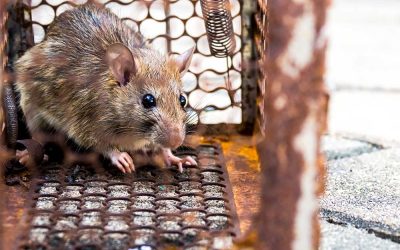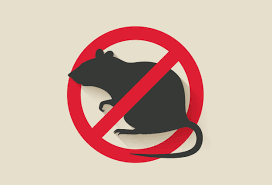Of the many insects that cause home damage, carpenter ants and termites are the top two pests that can destroy the wood inside your home.
Carpenter ants and termites cause thousands of dollars in damage, often moving around unseen for months.
While both pests can cause significant harm, there are major differences between carpenter ants vs. termites. Check out our article to learn how the damage caused by carpenter ants vs. termites differs!
Carpenter Ants vs. Termites: The Basics
Despite their affinity for wood, carpenter ants and termites have their fair share of differences. Here’s what you need to know about these two problem pests!
Diet and Housing
Typically, carpenter ants inhabit water-logged or rotting wood.
When indoors, carpenter ants still prefer to create nests inside damp or hollowed-out wood. Carpenter ants may even head to water-damaged areas in your home to build their winding tunnels.
Because carpenter ants don’t consume the wood they destroy, they often create tunnels that lead toward a food source. Preferring sugary and protein-rich substances, carpenter ants often utilize their hollowed-out spaces to reach hoards of living or dead insects like aphids.
Unlike carpenter ants, termites regularly feast on cellulose, with the substance making up most of their diet. Carpenter ants infest damaged wood, while most termite species eat any wood they encounter.
While known for their impact on homes, carpenter ants generally establish main colonies outside the confines of residential spaces. If you find an infestation indoors, you’ve likely spotted a satellite colony separate from the main area housing the queen.
Of course, some carpenter ant infestations can solely reside within your home with sufficient moisture, but most carpenter ant queens prefer to keep their young within rotting wood outdoors. The worker ants create supplemental nests to store and forage for food.
Some termite species, like subterranean termites, operate similarly. Instead of creating colonies within the wood they consume, subterranean termites build underground tunnels and connect their nest to your home via mud tubes.
These mud tubes allow worker termites access to the wooden areas in your home. After chewing through your walls and flooring, the workers return to the primary nest with spoils, divvying up food between the queen, soldiers, and larvae.
Reproductive Colony Members
After a few years, queens produce winged reproductives that exit colonies to complete nuptial flights in the air. For both termites and carpenter ants, their queens lay these colony members after the nest population has reached a considerable number or has existed for around two years.
Many homeowners often report spotting flying insects leaving their homes or hovering around their yard during the insects’ respective mating seasons. Because these pests can operate many months or years undetected, the flying bugs are usually the first sign of an infestation.
It’s easy to confuse a winged termite with a winged carpenter ant. The two insects look very similar, with their long wings and body types. However, it’s important to differentiate the two to ascertain what kind of insect infestation you have!
Carpenter ant alates have unequal wing lengths, while winged termites have equal wing sizes and considerably longer wings.
Like most other ant species, carpenter ants have a small waist that separates their thorax from their abdomen. Termites lack this feature and have long, broad waists.
Check out this video to see the difference between carpenter ants vs. termites!
The Difference in Home Damage
Home deterioration differs between carpenter ants vs. termites. It’s often difficult to distinguish between carpenter ant and termite damage without looking closely at the insects themselves.
If the pests are hidden deep within the wood or outside your home, you may have trouble figuring out the source of your insect infestation.
Carpenter ants typically have smoother tunnels accompanied by wood shavings or sawdust as the insects don’t eat the wood they burrow through. Termite tunnels will be more jagged because of their foraging habits.
Even if you have a clear view of the insects’ nests, it’s not easy to accurately pinpoint the cause of your problem. When you have an unknown insect issue in your home, call a professional pest control company like NTX Best Pest to lend a hand!
Signs of Carpenter Ants vs. Termites
Instead of studying the intricate wooden carvings in your walls, floors, doors, and window sills, look around for other indications of infestation!
The top signs of a carpenter ant infestation are:
- Sawdust
- Winged ants in early spring
- Large black ants foraging around your home
- Noises within your walls or floors
- Uneven wing pieces littering your home
You may also notice droppings, mud tubes, or winged termites for a termite infestation.
If you have drywood termites in your home, you’re more likely to see small tan droppings or frass littered around infested areas. Drywood termites prefer to hole up within your home’s wood, kicking out their feces as they tunnel through.
Subterranean termites instead utilize their frass to line the inside of their nests and create their signature mud tubes that connect their colonies to your home. You can locate these thin tubes climbing up the side of your home or on your walls.
Which Insect Causes More Damage?
Both insects can cause expensive disrepair to your home, but termites are more likely to cause a larger bill. Because most carpenter ant colonies exist outside of your home, it’s unlikely that you’ll have extensive disrepair unless you have a significant infestation.
Termites can majorly impact the integrity of many of your home’s wooden structures. Because these pests primarily rely on cellulose for nutrition, they will regularly eat away at the wood in your home.
Causing over five million dollars in damage yearly, termites can seriously harm your residence. While termites work slowly, a significant population could gradually eat away at your foundation within a year or two.
Have an Ant or Termite Infestation? Contact NTX Best Pest!
Whenever you’re struggling with pests, NTX Best Pest can answer your call! Carpenter ants and termites are nuisances for Texas homeowners, so we are fully equipped to battle any problem insects on your property!
Carpenter ants are no match for our ant pest control services. We can find the source of an infestation and treat the stubborn pests that linger in your home.
If you have termites, NTX Best Pest can also lend a hand! Using Sentricon, our technicians can eliminate existing termite colonies and keep you protected from future infestations. Give us a call today to discuss our services!



0 Comments